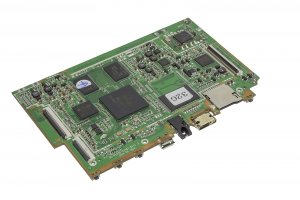Specifications :
Processor : RK 3188-T Cortex A9 Quadcore 1.4 Ghz
RAM memory: 2GB
Operating system: Google Android 4.4
Internal memory: 32GB
Display: TFT touch capacitive multicontact 10.1 "(16: 9 format) (1024 × 600 pixels)
Cameras: front of 0.3 Mp and rear of 2Mp
Battery: Rechargeable Lithium polymer (5000 mAh)
Inputs / Outputs:
USB 2.0 / USB 2.0 OTG
HDMI
Audio jack
Micro SD / SDHC card reader (max 32GB)
Connectivity:
Wifi 802.11 b / g / n, 2.4 Ghz GSM
Bluetooth
Dimensions : 260mm x 149mm x 9.8mm
Weight : 510 gr
